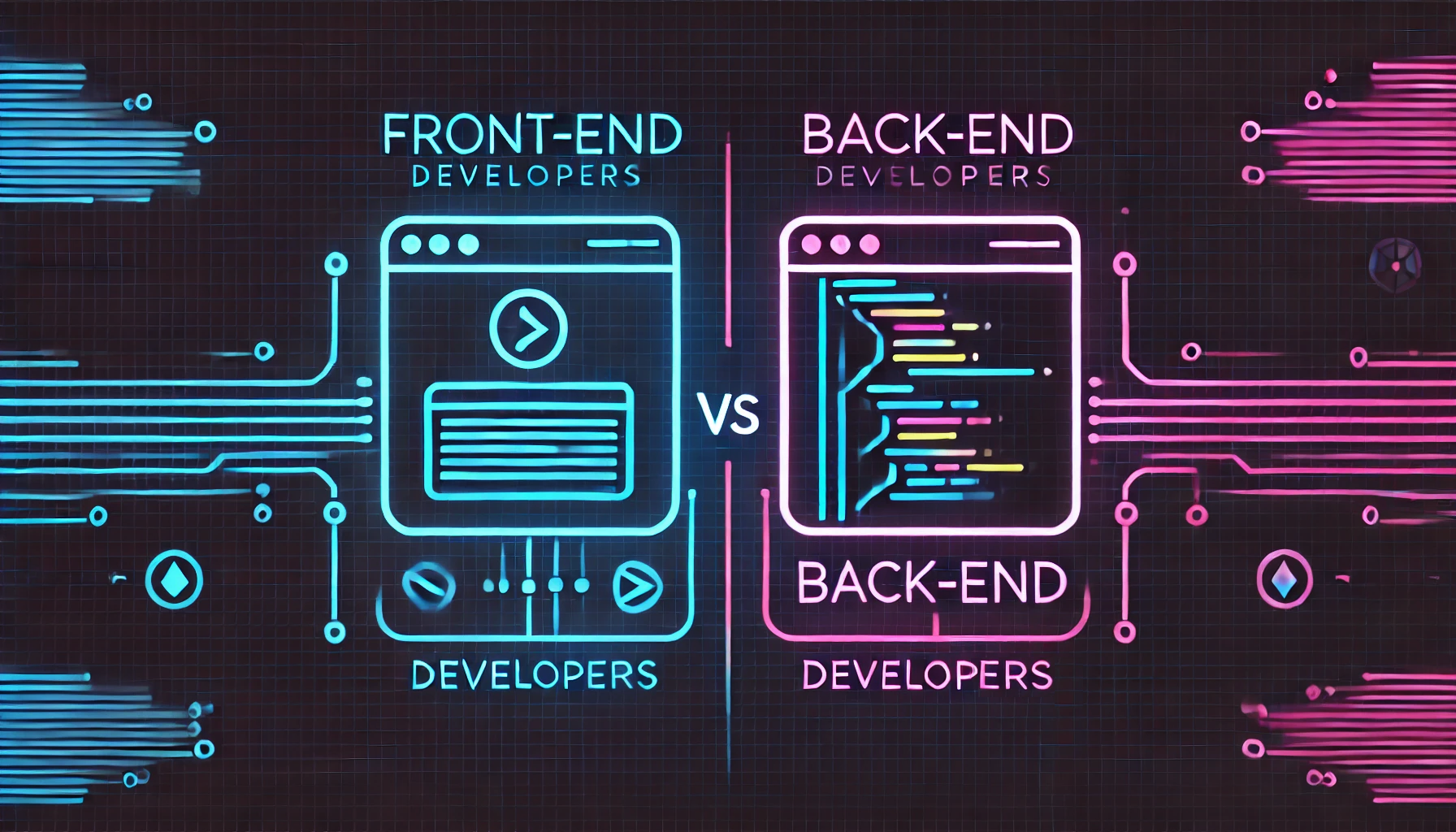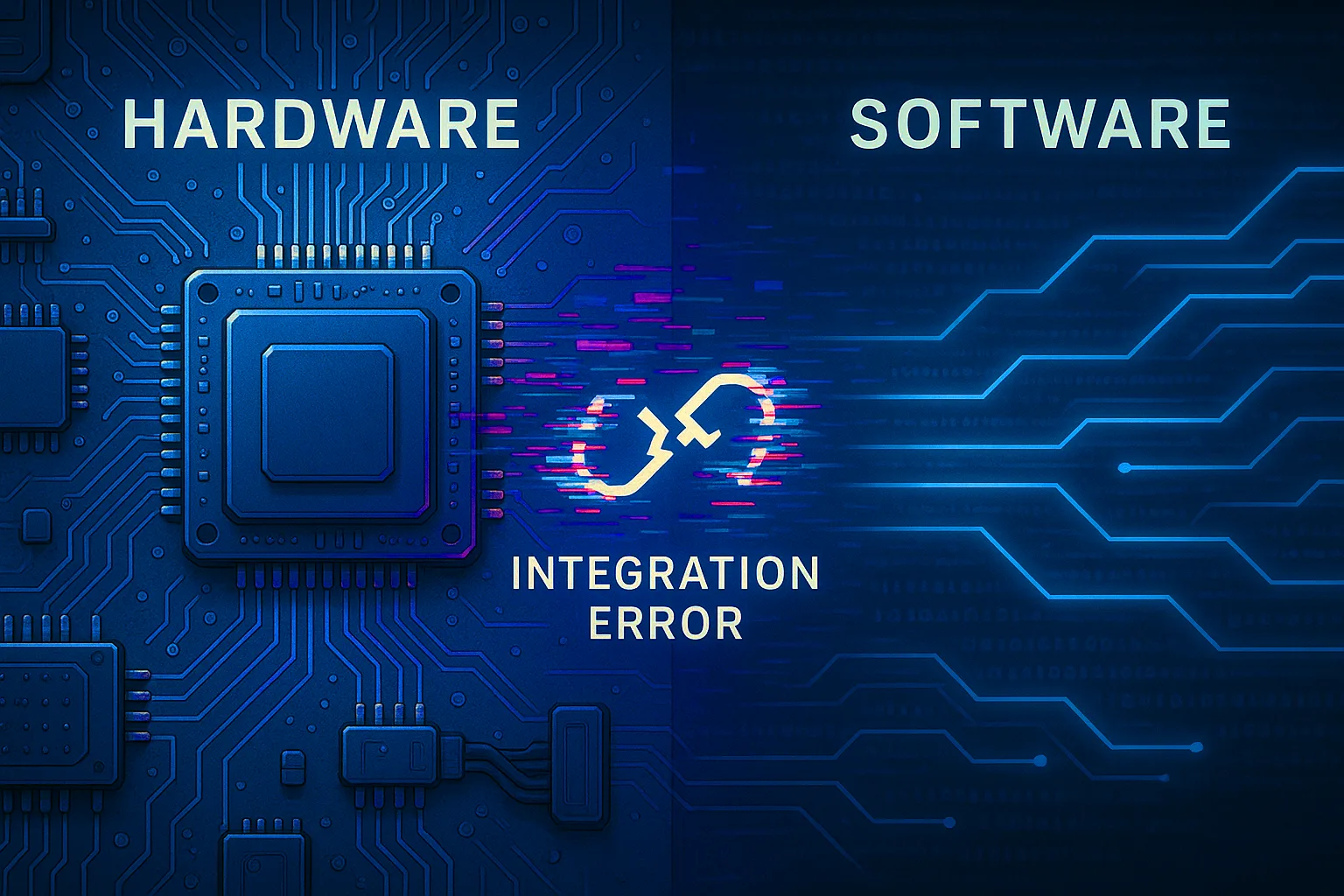Understanding the roles of a front-end developer vs. back-end developer is crucial for creating performant applications. These two roles, while distinct, work hand-in-hand to build the seamless digital experiences we interact with daily. Whether you’re a developer, project manager, or tech enthusiast, understanding the differences between front-end and back-end development is crucial.
Knowing the tools and languages involved, as well as current market trends, can provide valuable insights that can enhance collaboration among team members and optimize the allocation of resources. It also sharpens your ability to choose the right tools for specific tasks, making you more effective and adaptable in the ever-changing tech landscape.
Front-End Developer: Crafting the User Experience
A front-end developer is responsible for everything users see and interact with in a web or mobile application. This includes the layout, colors, fonts, and interactive elements. The main goal of front-end development is to create a smooth, intuitive, and visually appealing user experience.
Market Trends
The demand for front-end development is on the rise as businesses increasingly focus on enhancing user experience (UX). According to a report by Global Market Insights, the global front-end development services market is expected to grow from $8 billion in 2020 to reach $12 billion by 2025, driven by the proliferation of digital interfaces across industries.

A well-designed front end can significantly improve user engagement and conversion rates, which is why companies are investing heavily in talented front-end developers. Industry reports predict significant growth in the front-end development services market over the coming years, driven by the continued expansion of digital products and services.
Take, for instance, Airbnb’s focus on UX. The company consistently refines its user interface to make booking stays as effortless as possible. They conduct extensive user research and A/B testing to ensure that every visual element and interaction point is optimized for ease of use. This relentless pursuit of a seamless user experience has played a significant role in Airbnb’s success, driving higher engagement and conversion rates.
Languages and Tools
A front-end developer primarily uses HTML, CSS, and JavaScript. HTML structures the web page, CSS handles the visual design, and JavaScript adds interactivity. In addition to these core languages, a front-end developer often uses frameworks and libraries like React, Angular, and Vue.js. These tools help streamline the development process, making it easier to build complex, dynamic user interfaces.
Core Skills and Technologies
HTML: This is the backbone of any webpage, providing the fundamental structure and content layout. Mastery of HTML is essential for crafting the skeleton of web applications.
CSS: Beyond basic styling, CSS allows developers to create visually appealing and responsive designs. Using preprocessors like SASS or LESS can significantly enhance efficiency by enabling more dynamic stylesheets.
JavaScript: Essential for adding interactive features such as animations, video, and audio, JavaScript is complemented by a variety of libraries and plugins that enhance performance and functionality on websites.
Soft Skills and Creativity
Communication Skills: Effective communication is critical for collaborating with back-end developers and clients, especially when conveying complex design concepts to non-technical stakeholders.
Creativity: This skill is crucial for ensuring that websites are not only functional but also visually engaging and user-friendly. Creative developers enhance user experience by making sites easy to navigate and aesthetically pleasing.
By integrating both technical and soft skills, front-end developers can build engaging, efficient, and user-centered web applications.
For example, when Instagram decided to revamp its web application, the front-end development team leveraged React to create reusable UI components. This approach not only accelerated the development process but also ensured that every part of the interface was consistent in terms of design and functionality. This consistency is crucial in maintaining a brand’s identity across different platforms.
Back-End Developer: Powering the Application
A back-end developer works behind the scenes to build and maintain the technology that powers the front end. This involves managing the security, web services, integrations, database, and application logic that processes user requests and delivers content to the front-end interface.
Market Trends
According to a report by MarketsandMarkets, the global back-end-as-a-service (BaaS) market is projected to grow from $2.5 billion in 2020 to $5.9 billion by 2025.

The demand for skilled back-end developers is growing rapidly, especially as more businesses migrate to the cloud and rely on data-driven technologies. The rise of microservices architecture, which breaks applications into smaller, independent services, has further increased the need for scalable back-end solutions. The global back-end-as-a-service (BaaS) market is expected to see significant growth, driven by the need for efficient, scalable server-side development.
Consider Netflix, which has adopted a microservices architecture to handle its immense volume of streaming content. Each microservice in Netflix’s architecture is responsible for a specific piece of functionality, such as user authentication, recommendations, or video streaming. This setup allows Netflix to scale its services independently, ensuring that users experience minimal downtime even during peak usage times.
Languages and Tools
A back-end developer typically uses languages like Python, Java, PHP, and C#. These languages are selected based on the application’s specific requirements, such as performance, scalability, and security. For instance, Python is a favorite among back-end developers for its simplicity and powerful libraries, especially in areas like web development and data science.
Essential Skills for Back-End Developers
Programming Languages:
- Python: Known for its ease of use and robust frameworks like Flask and Django, Python is ideal for creating data structures and algorithms. Its libraries, such as NumPy, are invaluable for handling complex computations.
- Java: This language is prized for its cross-platform compatibility, making it a staple for building versatile applications.
- Ruby: As a free, open-source language, Ruby offers a comprehensive toolkit for rapidly developing applications. It’s particularly effective for high-traffic websites and is often utilized by full-stack developers.
Problem-Solving Skills:
- Back-end development demands strong problem-solving capabilities. Developers frequently engage in tasks like debugging and testing to ensure that back-end systems operate smoothly and efficiently.
Communication Skills:
- Effective communication is crucial. Back-end developers often need to convey complex technical concepts to stakeholders who may not have a technical background, ensuring that project goals are aligned and clearly understood.
- Effective communication is crucial. Back-end developers often need to convey complex technical concepts to stakeholders who may not have a technical background, ensuring that project goals are aligned and clearly understood.
By balancing technical expertise with soft skills, back-end developers can effectively build and maintain the robust infrastructure that powers dynamic web applications.
For example, Spotify’s back-end infrastructure relies heavily on Python to handle its massive user base and music library. Python’s flexibility allows Spotify’s developers to write clean and efficient code, which is critical when dealing with millions of daily users streaming music simultaneously. The Django framework, built on Python, helps manage the server-side operations, ensuring that users can quickly search for and play their favorite songs.
Understanding the Key Differences Between Front-End and Back-End Developer Roles
While the roles of front-end developers and back-end developers are distinct, they are deeply interconnected. The front end relies on the back end to retrieve and display data, while the back end depends on the front end to present this data in a user-friendly way.
Both roles work closely with other team members, including designers and user experience analysts, to ensure that the application is visually appealing and intuitive.
Collaboration doesn’t stop there; back-end developers also engage with management and business stakeholders to understand project goals and requirements. This ensures that the technical architecture aligns with business objectives.
Technologies like RESTful APIs and GraphQL facilitate this communication, enabling seamless interaction between the server-side and client-side of an application. Through these technologies, data flows effortlessly between the layers, allowing teams to focus on delivering a cohesive and efficient user experience.
By maintaining open lines of communication and leveraging the expertise of each team member, front-end and back-end developers create applications that are not only functional but also meet the needs of both users and business stakeholders.
Front-End Development: The User’s Experience
- Visual Focus: Front-end developers are concerned with visual elements—the parts users interact with. They craft the layout, design, and overall aesthetic.
- Technological Tools: To achieve this, front-end developers rely on languages like JavaScript, HTML, and CSS. They often use frameworks and libraries such as React, Angular, and Bootstrap to enhance productivity and functionality.
- Interdisciplinary Skills: Beyond technical expertise, front-end devs blend creativity and communication skills to translate ideas into interactive experiences. They frequently collaborate with back-end developers and designers to maintain design consistency.
Back-End Development: The Backbone
- Structural Integrity: Back-end developers lay the groundwork, focusing on server-side logic, databases, and application functionality. They ensure data is managed efficiently and the front-end behaves as intended.
- Core Languages: Their expertise lies in languages like Python, Java, Ruby, and PHP. Frameworks such as Django, Laravel, and Spring help streamline the development process.
- High Demand and Expertise: Known for technical prowess, back-end developers are tasked with complex problem-solving and are often highly sought after for their ability to ensure websites operate smoothly and securely.
Salary Insights and Collaboration
- Earnings Perspective: Aligning with their specialized skills, back-end developers tend to earn slightly higher salaries than their front-end counterparts, with averages reflecting this demand.
- Team Dynamics: Both roles require collaboration, as back-end developers often work in tandem with front-end developers, alongside various stakeholders, to deliver a seamless web experience.
Conclusion
Understanding the distinct yet interconnected roles of a front-end developer and a back-end developer is essential for building successful digital applications. Whether you’re looking to specialize as a developer in one of these areas or manage a project that involves both, recognizing the strengths and challenges of each role can lead to better decision-making and more effective development processes.
As technology continues to evolve, the roles of front-end and back-end developers may overlap more, particularly with the rise of full-stack development. However, the fundamental principles of creating user-friendly, efficient, and scalable applications will always depend on the collaborative efforts of both front-end developers and back-end developers.
Staying informed about industry trends and continuously improving your skills in relevant technologies is key to thriving in the competitive field of software development. By doing so, you can ensure that your applications not only meet current demands but are also prepared for the future of digital transformation.





